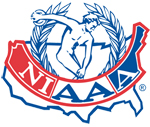It can be difficult to always act in the least risky manor in a situation where you are uncertain about the outcome. It is important to do your best to always err on the side of caution when it comes to any athlete's health and safety.
In this case study, a young athlete (Mogabgab) is not feeling well during a football practice. This practice is being held at a off-site facility that the kids bus to and from everyday after school. Coaches send Mogabgab to rest in the bus until practice is over, but there is no improvement in his condition. Upon returning to the school, the coaches have Mogabgab's teammates take him into the showers to cool him down. Again, there is no improvement in his condition. Mogabgab's father, unaware of his condition, now arrives to pick him up from practice and finds him shivering in the locker room. After consulting with their doctor, Mogabgab is taken to the local hospital where he then dies less than 2 hours later from heat stroke.
What should the coaches have done that did not happen? What safety measures does the school need to have in place to prevent anything like this from happening again?
 This material comes from an NIAAA Leadership Training Institute Course taught at the 2016 National Athletic Director's Conference in Nashville. For more information, you can view the NIAAA Course Catalog here.
This material comes from an NIAAA Leadership Training Institute Course taught at the 2016 National Athletic Director's Conference in Nashville. For more information, you can view the NIAAA Course Catalog here.






